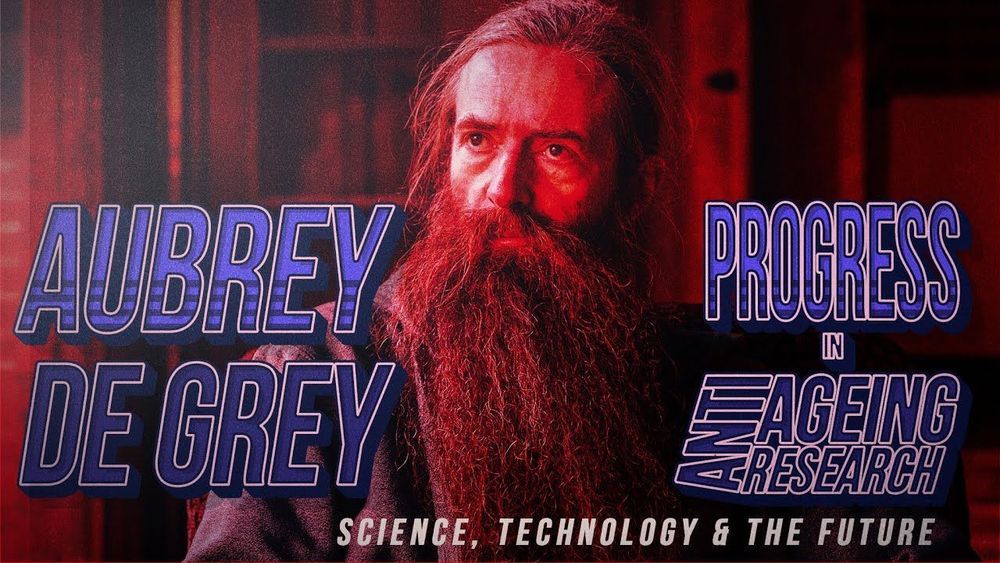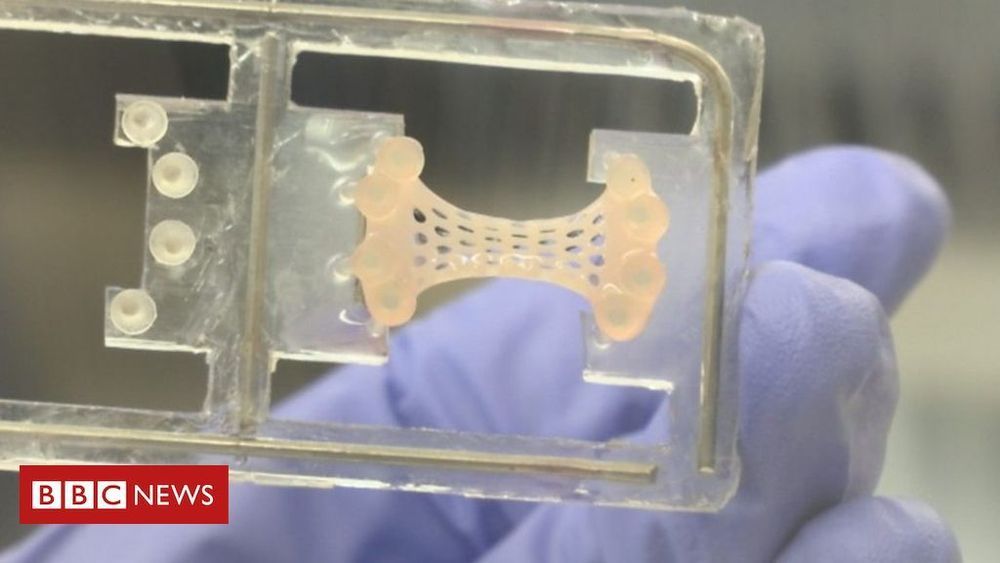Page 9398
Mar 2, 2019
The good kind of fat
Posted by Paul Battista in categories: biotech/medical, neuroscience
Metastasis is the leading cause of death from cancer, occurring when cancer cells separate from the original tumor to proliferate elsewhere. These new cancer cells travel through the bloodstream or lymphatic system. Since these bodily systems are thoroughly connected, cancer can spread to a variety of locations. Breast cancer, for example, “tends to spread to the bones, liver, lungs, chest wall, and brain.”
Cancer cell plasticity — an ability that allows cancer cells to shift physiological characteristics dramatically — fosters metastasis and is responsible for cancer’s resistance to treatments. To combat its resistance, researchers at the University of Basel in Switzerland decided to turn cancer’s cellular plasticity against itself. They used Rosiglitazone, an anti-diabetic drug, along with MEK inhibitors in mice implanted with breast cancer cells. Their aim was to alter the cancer cells.
The drug combination hijacked the breast cancer cells during epithelial-mesenchymal transition (EMT), a process by which the cells undergo biochemical changes. EMT plays a role in many bodily functions, such as tissue repair. In unaltered cancer cells, EMT allows them to migrate away from the original tumor while maintaining their oncogenic properties.
Mar 2, 2019
Aubrey de Grey Thinks Robust Human Longevity Might Be Here by 2037
Posted by Paul Battista in category: life extension

Aubrey de Grey is getting more bullish about his timeframes for robust human rejuvenation and longevity escape velocity. He now thinks it is only 18 years away and not 25 years anymore.
There is fastly progressing science and there is a rapid increase in funding and formation of companies. Areas that were making slow progress like Mitosens are now rapidly progressing. Cross-linking is making progress as well.
Continue reading “Aubrey de Grey Thinks Robust Human Longevity Might Be Here by 2037” »
Mar 2, 2019
Stem cell heart patches ‘could save lives’
Posted by Paul Battista in categories: biotech/medical, innovation
A medical breakthrough by scientists at Imperial College London could save thousands of heart patient’s lives.
Working with the British Heart Foundation, they have developed beating heart patches which could restore the muscle strength lost after a heart attack.
Claire-Marie Berouche has third-stage heart failure and she’s hoping the patch will change her quality of life.
Continue reading “Stem cell heart patches ‘could save lives’” »
Mar 2, 2019
Self-Powered Sensor Helps Track Firefighters in Burning Buildings
Posted by Genevieve Klien in category: electronics
Mar 2, 2019
5G can make digital humans look real and turn real people into holograms
Posted by Quinn Sena in categories: business, holograms, internet, mobile phones
Holograms. Emotive, life-like digital human beings. Washing machine repairs directed from miles away.
The rollout of 5G wireless networks that will continue throughout 2019 and beyond promises a slew of new smartphones that will hum along much faster than the models they’ll eventually replace. But while zippier handsets compatible with the next generation of wireless are surely welcome, 5G’s potential extends beyond them.
Verizon, and some of the entrepreneurial startups it is working with, recently demonstrated a few of the fresh consumer and business experiences made possible or enhanced by 5G, at its 5G Lab in New York City, one of five such labs around the country.
Mar 2, 2019
The Habitable Planet Finder Is a New Tool to Locate Earth-like Exoplanets
Posted by Genevieve Klien in categories: cosmology, futurism
Astronomers have a new tool to help them find habitable planets in our galaxy: the Habitable Planet Finder (HPF), a high-precision spectrograph. The HPF can be used to detect worlds which have some key qualities, like being a rocky planet orbiting an red dwarf. A red dwarf, also known as an M-dwarf, is a type of star that is relatively cool, small, and dim, and is somewhat similar to our Sun (which is classified as a white or yellow dwarf.) Red dwarfs are common in the Milky Way, like the nearby Barnard’s star, making them good hunting grounds for exoplanets.
“About 70 percent of the stars in our galaxy are M-dwarfs like Barnard’s star, but the near-infrared light they emit has made it difficult for astronomers to see their planets with ordinary optical telescopes,” Paul Robertson, assistant professor of physics and astronomy at the University of California, Irvine, said in a statement. “With the HPF, it’s now open season for exoplanet hunting on a greatly expanded selection of stellar targets.”
The HPF measures subtle changes in the color of light given off by stars, which can indicate the influence of an orbiting planet. In particular, it searches for planets with a low mass located within the “habitable zone” of their stars where surface water can exist. The spectrograph has already demonstrated its usefulness by confirming the existence of a super-Earth which is orbiting Barnard’s star during its commissioning, and should be able to detect many more planets similar in size to Earth in the future.
Continue reading “The Habitable Planet Finder Is a New Tool to Locate Earth-like Exoplanets” »
Mar 2, 2019
Science has figured out how to freeze the aging process
Posted by Genevieve Klien in categories: biotech/medical, life extension, science
Medical advances and living standards have extended the average human longevity from 48 years in 1955 to 71 years today, and the elderly are now the fastest growing segment of society. But while our life spans are improving, our health spans are not, writes science journalist Sue Armstrong in “Borrowed Time: The Science of How and Why We Age” (Bloomsbury), out now.
“Over the past 50 years, health care hasn’t slowed the aging process so much as it has slowed the dying process,” she writes, quoting gerontologist Eileen Crimmins.
Continue reading “Science has figured out how to freeze the aging process” »
Mar 2, 2019
James Hughes’ Problems of Transhumanism: A Review (Part 5) – Article
Posted by B.J. Murphy in category: transhumanism
This is Part 5 of a 5-part series by Chogwu Abdul, founder of the Transhumanist Enlightenment Café (TEC), where he explores the thought-provoking intricacies of James Hughes’ “Problems of Transhumanism.”
In this Final Part, he explores “Belief in Progress vs. Rational Uncertainty.”
Mar 2, 2019
9 Steps to Start Living Longer Today
Posted by Paul Battista in categories: computing, internet, life extension
An award-winning scientist, engineer, and millionaire several times over predicted that by 2029, humans could start living forever.
That’s right. Immortality is almost here.
This ‘futurist’ has been frightening the masses with his predictions for years.
















